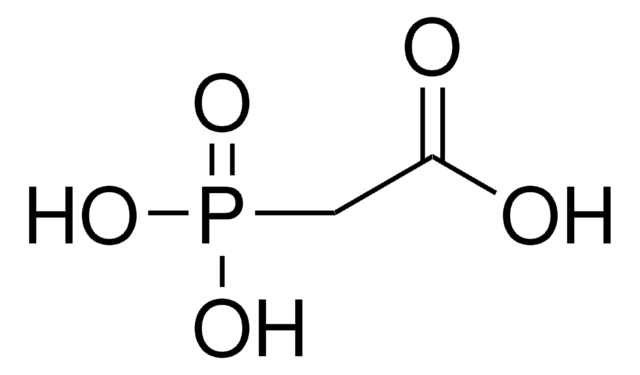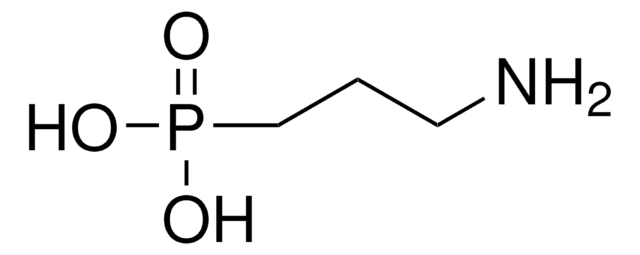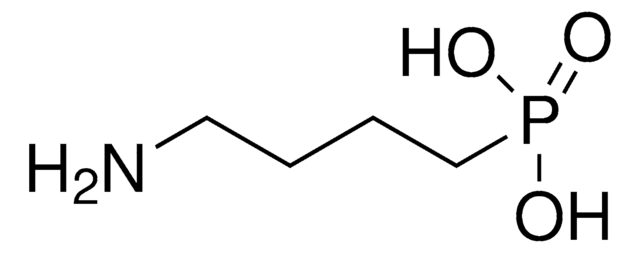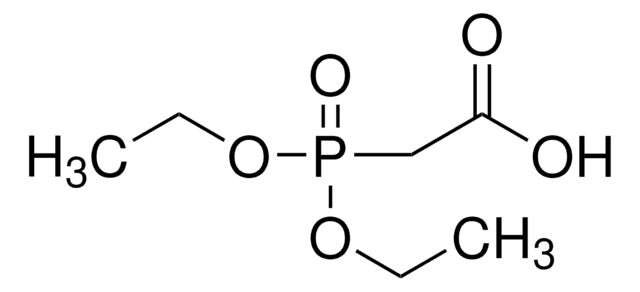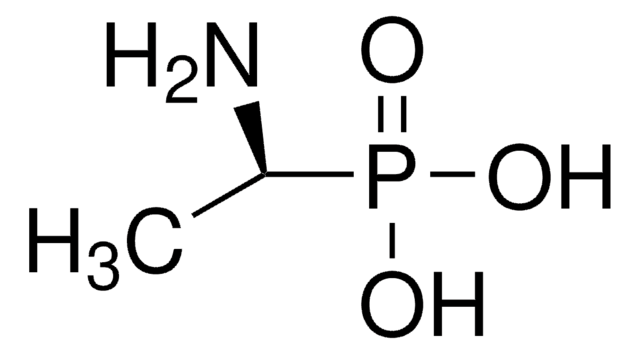228559
3-Phosphonopropionic acid
technical grade, 94%
Synonym(s):
2-Carboxyethanephosphonic acid
Sign Into View Organizational & Contract Pricing
All Photos(2)
About This Item
Linear Formula:
(HO)2P(O)CH2CH2COOH
CAS Number:
Molecular Weight:
154.06
EC Number:
MDL number:
UNSPSC Code:
12352100
PubChem Substance ID:
NACRES:
NA.22
Recommended Products
grade
technical grade
Quality Level
Assay
94%
form
solid
functional group
carboxylic acid
SMILES string
OC(=O)CCP(O)(O)=O
InChI
1S/C3H7O5P/c4-3(5)1-2-9(6,7)8/h1-2H2,(H,4,5)(H2,6,7,8)
InChI key
NLBSQHGCGGFVJW-UHFFFAOYSA-N
Looking for similar products? Visit Product Comparison Guide
Application
3-Phosphonopropionic acid was used to functionalize the bulk phosphate glass surface.
Signal Word
Danger
Hazard Statements
Precautionary Statements
Hazard Classifications
Eye Dam. 1 - Skin Corr. 1B
Storage Class Code
8A - Combustible corrosive hazardous materials
WGK
WGK 3
Flash Point(F)
302.0 °F - closed cup
Flash Point(C)
150 °C - closed cup
Personal Protective Equipment
dust mask type N95 (US), Eyeshields, Gloves
Choose from one of the most recent versions:
Already Own This Product?
Find documentation for the products that you have recently purchased in the Document Library.
Customers Also Viewed
H T Schmidt et al.
Journal of microencapsulation, 23(7), 769-781 (2006-11-25)
Hollow calcium phosphate nanoparticles capable of encapsulating poorly water-soluble molecules were produced by self-assembly. Previously reported were solid calcium phosphate nanoparticles and water-filled calcium phosphate nanocapsules suited for encapsulating mostly hydrophilic, but not hydrophobic compounds. Here, calcium phosphate was deposited
Charles E McKenna et al.
Journal of medicinal chemistry, 53(9), 3454-3464 (2010-04-17)
3-(3-Pyridyl)-2-hydroxy-2-phosphonopropanoic acid (3-PEHPC, 1) is a phosphonocarboxylate (PC) analogue of 2-(3-pyridyl)-1-hydroxyethylidenebis(phosphonic acid) (risedronic acid, 2), an osteoporosis drug that decreases bone resorption by inhibiting farnesyl pyrophosphate synthase (FPPS) in osteoclasts, preventing protein prenylation. 1 has lower bone affinity than 2
Serena Donnini et al.
Proteins, 76(1), 138-150 (2008-12-18)
When estimating binding affinities of a ligand, which can exists in multiple forms, for a target molecule, one must consider all possible competing equilibria. Here, a method is presented that estimates the contribution of the protonation equilibria of a ligand
Satya Narayan Patel et al.
Bioresource technology, 247, 633-639 (2017-10-11)
The aim of the study was to covalently immobilize Smt3-D-psicose 3-epimerase onto functionalized iron oxide magnetic nanoparticles. After immobilization, K
Vishal Singh et al.
International journal of biological macromolecules, 115, 590-599 (2018-04-24)
Magnetite and magnetite core/shell (Fe3O4/SiO2) nanoparticles were synthesized and functionalized with two different alkyl chain length linkers that were 3-Phosphonopropionic acid (3-PPA) and 16-Phosphonohexadecanoic acid (16-PHDA). Xylanase (EC 3.2.1.8, endo-1,4-xylanase, endo-1), was immobilized on as synthesized bare and silica coated
Our team of scientists has experience in all areas of research including Life Science, Material Science, Chemical Synthesis, Chromatography, Analytical and many others.
Contact Technical Service
